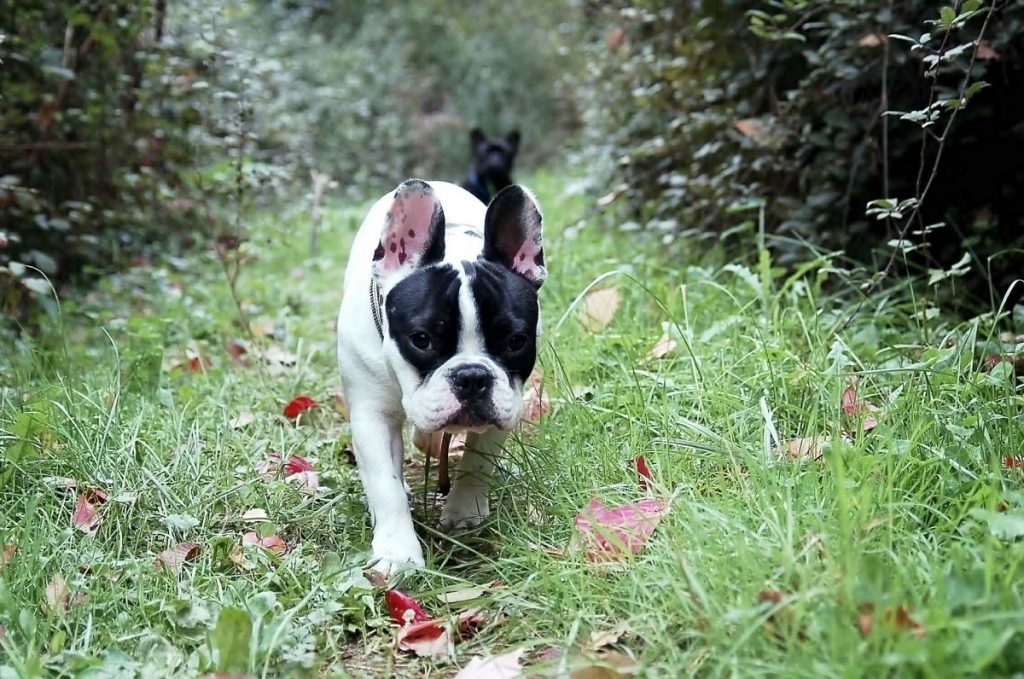It is very common for dogs to try and escape to run around and explore. Dogs like to experience new sights and sounds and experience their surroundings. Your pup was built to run around and explore, but it is scary for a dog owner when they are not able find their furry friend.
Here are some reasons dogs run away and some training tips you can use to prevent your pup from running away:
Why Your Dog May Be Running Away
Boredom/Loneliness
As a dog owner, you know how much attention your pup needs. If you start to notice your dog is running away more and more, try setting aside more time for walks, trips to the beach or the park, or a classic game of fetch. Dogs are social animals and need to experience interaction with people, other dogs, and new stimuli on a regular basis. Make sure to follow these outings with a lot of affection and praise.
Fear
If your pup is startled, he may frantically look for an escape route. If possible, try to recreate the sound and show your dog that there’s nothing to be fearful of by remaining calm, giving him some love, and rewarding him with treats. If you know there’s going to be fireworks or a thunderstorm, make sure your dog is inside and has somewhere safe to hide.
Excitement
When dogs get excited they may react by chasing after the exciting thing (cats, squirrels, the mailman). It is important to train your pup that chasing something is not good behavior. The best way to deter your dog is by using a life-like stuffed animal to teach your dog to remain calm and “stay.”
Mating
This typically only applies to un-neutered male pups. Dogs have needs too, and it stands to reason that they may have the urge to try and escape to look for a mate. The solution to this is simple: Get your dog neutered. It reduces 90% of roaming urges in male dogs. If neutering isn’t an option, intensive training may be necessary to combat these instincts.
Moving
Your dog may run away in search of his old stomping grounds because he misses home. Make sure to surround your pup with familiar objects and smells. Don’t just let your dog explore on his or her own. Take your dog around and allow him to sniff everything while you offer affection and reassurance. If there’s a major change in household dynamic (i.e., new baby, marriage, loud metropolis vs quiet neighborhood), a professional trainer may be necessary.
Tips for Training Your Dog to Not Run Away
These are some general training tips to keep your dog calm, cool, and collected instead of running away.
Training Treat
Use a special treat that your dog will only receive during training sessions. If your pup is given the same treat outside of training, it may be less effective.
Exercise First
Exercise your dog before obedience training so he is more relaxed and inclined to listen. Train your pup in a large, but enclosed area without distractions. As your dog gets better, graduate to an open space with more distractions, like a park.
Use Commands
The best tool for preventing your dog from running away is firmly training him to “come.” Reward your dog for coming back to you with affection, treats, or toys. Reward your dog mid-playtime for coming back as well. If you only give positive reinforcements to your pup at the end of playtime, he will associate “come” with playtime being over.
If your dog runs away and then comes back to you, do not reprimand him for it — he will think he’s being scolded for coming back. Dogs also need to learn to listen to the command “stay.” Training your dog to stay will help you fix a lot of flighty behaviors.
Be A Gatekeeper
Teach your dog to wait for your permission before going through an open door. Lead your pup up to a door or gate on a leash. Make your dog sit. Then reach for the doorknob. As your dog stands up to leave, remove your hand and make him sit again. Repeat this until your dog learns that your permission is required to pass through the door.
Keep in mind that some breeds are more prone to these behaviors than others. Research your specific breed before implementing a training regiment. Some dogs may need a very intensive plan with a professional dog trainer.






